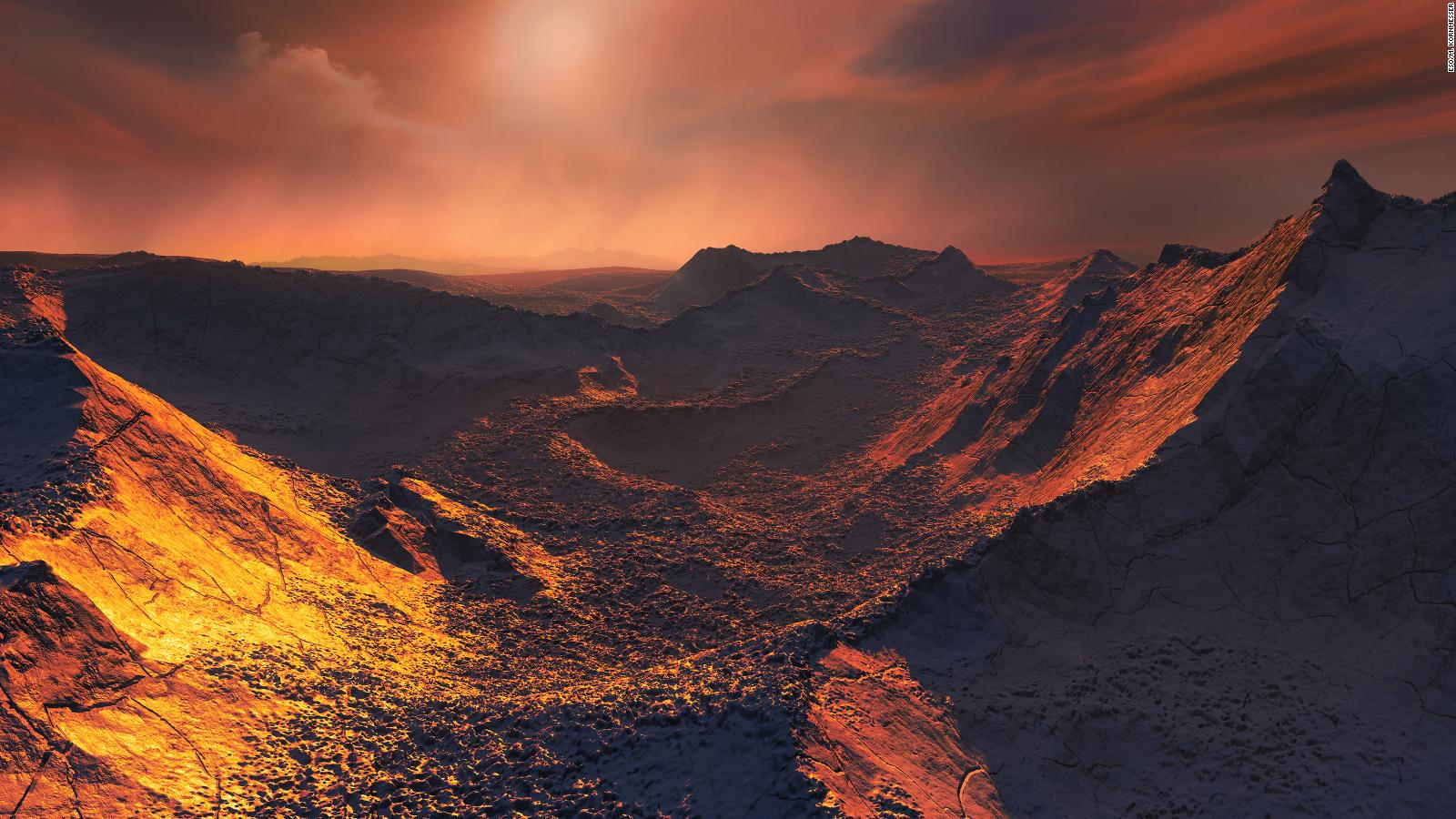The star system has been named Apep and is detailed in a study published Monday in the journal Nature.
"When we saw the stunning dust plume coiled around these incandescent stars, we decided to name it 'Apep' -- the monstrous serpent deity and mortal enemy of Sun god Ra from Egyptian mythology," Joe Callingham, lead study author at the Netherlands Institute for Radio Astronomy, said in a statement.
"The name seemed fitting as the sinuous dust plume looks like a coiled serpent doing battle with a central star," study co-author Peter Tuthill, a professor at the University of Sydney, said in a statement.
The system is a Wolf-Rayet star system. Massive stars evolve into Wolf-Rayets as they approach the end of their lives. This stage lasts a few hundred thousand years, but in the lifetime of a star, that's very short, the astronomers said.
Inside this system are two massive stars that orbit each other, as well as a single companion star bound to them by gravity. The companion star is also probably a Wolf-Rayet star that's shedding gas, helping create the intricate shape of the dust cloud.
That sculpted plume was what caught their attention.
"The curved tail is formed by the orbiting binary stars at the center, which inject dust into the expanding wind creating a pattern like a rotating lawn sprinkler," Tuthill said. "Because the wind expands so much, it inflates the tiny coils of dust revealing the physics of the stars at the heart of the system."
Surrounding this nest of stars is a stellar wind of material being ejected from them. That stellar wind is moving at 12 million kilometers per hour -- 100,000 times faster than Earth's hurricanes.
But the dusty pinwheel itself is moving slower, at 2 million kilometers per hour, which appears like a crawl compared to the stellar wind.
"The only way we get such a system to work is if the Wolf-Rayet star is spewing out gas at several speeds," co-author Benjamin Pope of New York University said in a statement. "One way for such different winds to happen is via critical rotation. One of the stars in Apep is rotating so fast that it is nearly ripping itself apart. On its equator, the rotational forces make the gas basically weightless, so it slowly floats off the equator."
Tuthill said, "It was just astonishing. It was like finding a feather caught in a hurricane just drifting along at walking pace."
Once the stars go through the Wolf-Rayet stage, they will explode into supernovae. But the rapidly rotating star is moving so fast that it's believed that it will unleash a long-duration gamma-ray burst when the core collapses as the star dies. The astronomers can't be sure when this will happen due to the rapid rotation, but it could be at any time.
"Apep's dust pinwheel moves much slower than the wind in the system," Callingham said. "One way this can occur is if one of the massive stars is rotating so quickly that it is nearly tearing itself apart. Such a rotation means that when it runs out of fuel and begins to explode as a supernova, it will collapse at the poles before the equator, producing a gamma-ray burst."
Gamma-ray bursts been observed in other galaxies but never in our own -- although some astronomers believe this might have happened in our galaxy in the past.
These bursts are the most extreme and energetic events in the universe, after the Big Bang, of course. The astronomers noted that Apep isn't aimed in the direction of Earth.
If Earth were to be in the path of a gamma-ray burst, it could strip the ozone from our atmosphere -- even from 8,000 light-years away.
"Ultimately, we can't be certain what the future has in store for Apep," Tuthill said. "The system might slow down enough so it explodes as a normal supernova rather than a gamma-ray burst. However, in the meantime, it is providing astronomers a ringside seat into beautiful and dangerous physics that we have not seen before in our galaxy."
Bagikan Berita Ini


















0 Response to "First-known 'pinwheel' star system is beautiful, dangerous and doomed"
Post a Comment